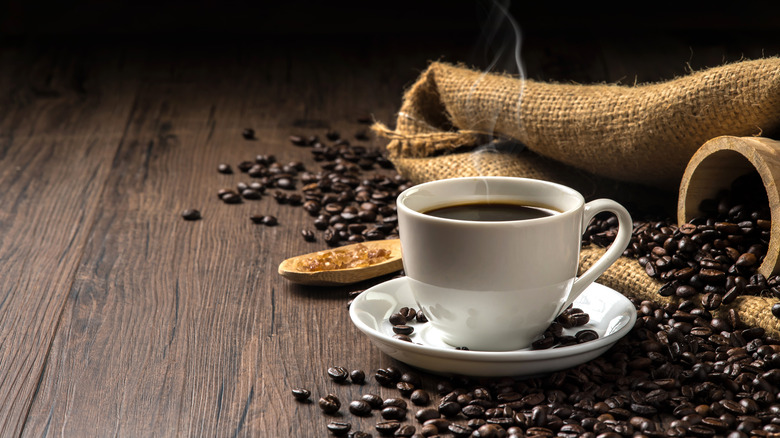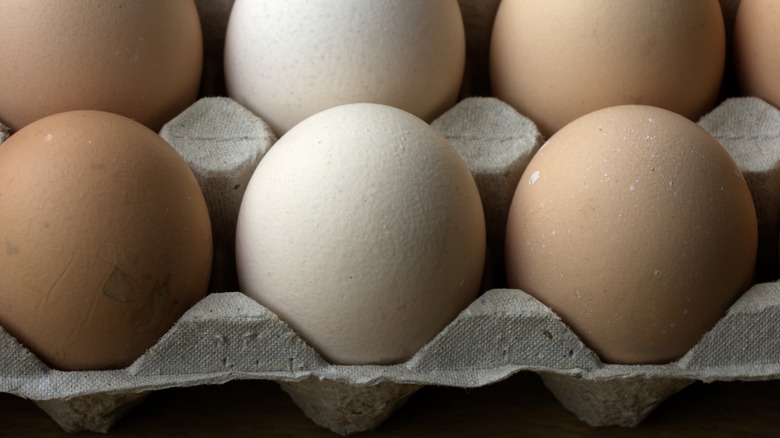How Egg Coffee Became A Minnesota Tradition
There are many methods to serve up the perfect cup of coffee. Deciding which one to use comes down to time, equipment, and personal taste. However, in many parts of the Midwest, the perfect cup is served up with an unexpected additive — egg. It might be called "Church Basement Coffee", "Lutheran egg Coffee", or "Scandinavian Egg Coffee," but they're all in reference to the same light-colored, caffeine-heavy cup of joe (via Gastro Obscura).
According to Eater, Midwestern egg coffee is traditionally made by mixing a whole egg — and sometimes even the shells — with the coffee grounds before adding water and bringing it all to a boil. A splash of cold water is then thrown in, and the remaining liquid is drained off or filtered through to create a cup of coffee that is said to be unplagued by bitterness, and free of acidity. The method is said to also lend a lighter color, and sienna tint to the typically black beverage.
Unlike Vietnamese egg coffee, where the egg is used with evaporated milk to add a rich froth to the coffee, Midwestern egg coffee was actually used to solve several brewing problems. At the time egg coffee was invented, much of the coffee available was of poorer quality than what's served in most cafes today (via Eater).
What makes egg coffee special?
According to Gastro Obscura, egg coffee is said to have been brought to the Midwest by way of Scandinavia and born from necessity. Many Swedish and Norwegian immigrants moved to the area around the 19th and 20th centuries and brought their quick fix for poor quality coffee along with them.
Eater reports that the egg in egg coffee was introduced as a clarifying agent. Its proteins bonded with more bitter flavor components and left behind a cleaner, more palatable brew. The eggs and their newly bonded partners then form a solid mass at the top of the brew after boiling. According to The Spruce Eats, that splash of cold water is thrown in at the end, creating a French press effect. Eater notes that it causes the solid formation mass to sink to the bottom, and the remaining liquid can be drawn off and served. The site reports that some Midwesterners like Minneapolis' nouveaux-Scandinavian restaurant, Upton 43, have revived the brew as a way to connect to the region's immigrant heritage.
The next time you're looking to try something new with your morning coffee or you're trying to pass off some Folgers as a cup of third-wave craft java, try some Midwestern egg coffee.

